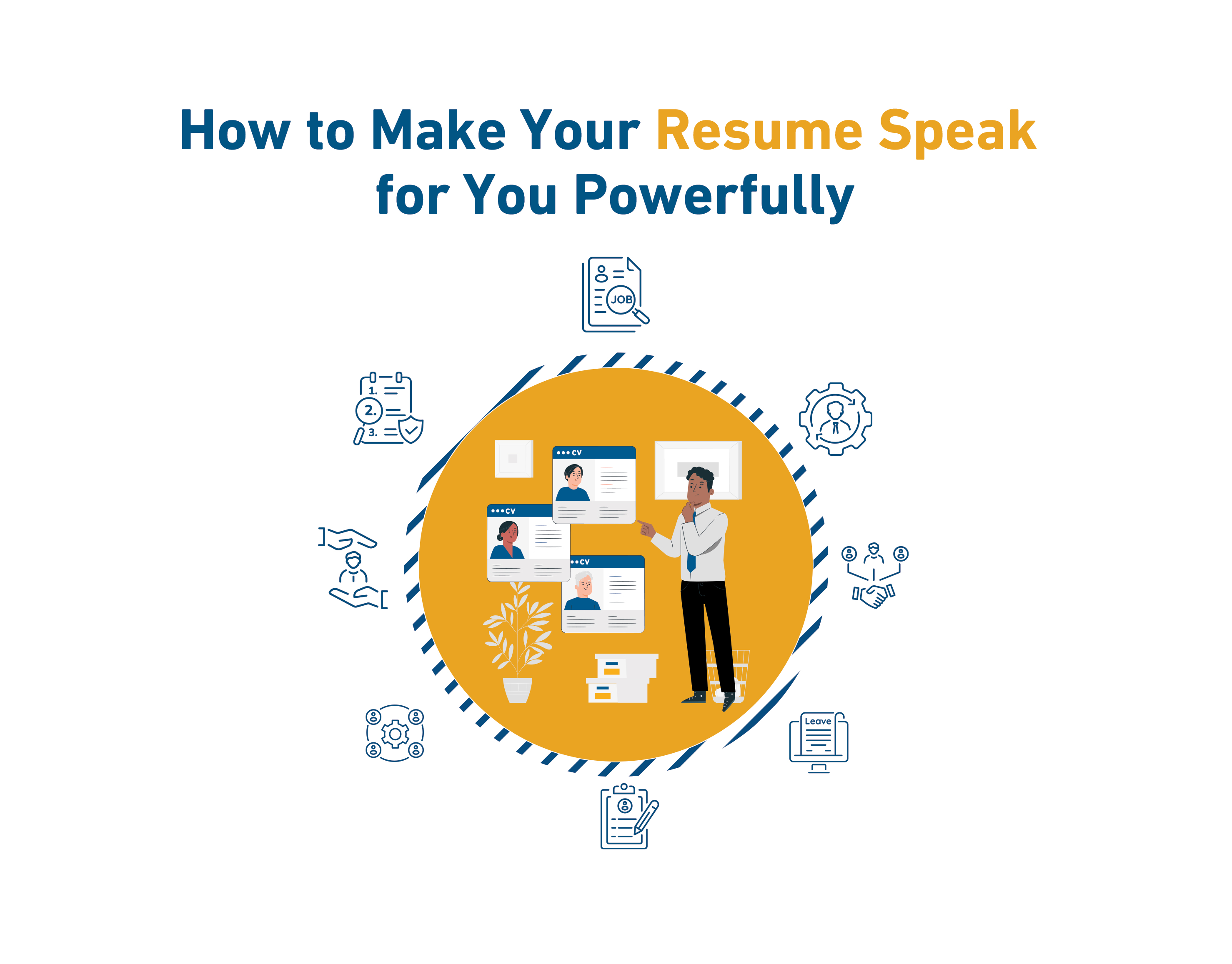
How to Make Your Resume Speak for You Powerfully
How to Make Your Resume Speak for You Powerfully
In today’s competitive job market, a resume is no longer just an introductory document—it’s the real gateway to any career opportunity. Employers often have only a few seconds to decide: is this candidate worth an interview?
So the core question is: How can you make your resume speak for you powerfully and open doors?
The answer lies in six practical steps based on clarity, intelligence, and professional self-marketing:
1. Start with a Strong Professional Summary
Your opening paragraph should be brief and to the point, highlighting who you are and what you offer.
Avoid cliché phrases like: “I am a graduate looking for a job.”
Instead, focus on the value you bring.
A strong example:
“Human Resources Specialist with over 5 years of experience in developing recruitment policies and enhancing employee performance in fast-paced, dynamic environments.”
Harvard Business Review recommends that your professional summary focus on achievements and added value—not just self-introduction.
2. Use Keywords Related to the Job
Most companies today rely on Applicant Tracking Systems (ATS) that filter candidates based on specific keywords.
So, read the job posting carefully and include important terms in your resume, such as:
Project Management – Data Analysis – Budgeting
Tools like Jobscan can help automatically match your resume with job requirements.
3. Highlight Achievements, Not Tasks
Don’t write: Responsible for sales
Instead, write: Achieved a 30% increase in sales within the first 6 months by launching an innovative marketing campaign
Always use the formula: [Result] + [Action You Took]
Because numbers and statistics speak louder than words.
4. Organize Your Work Experience Smartly
If you have strong recent experience, put it first.
If there are gaps in your work history, consider using a Skills-Based CV format.
In general, use reverse chronological order (from most recent to oldest) if your experience is continuous and clear.
5. Design Your Resume with Professional Visuals
Avoid cluttered visuals and distracting colors.
Use clean fonts like Calibri or Helvetica.
Organize your content into clear sections: Experience – Education – Skills – Courses – Achievements
You can use elegant templates from websites like Canva or Zety.
6. Be Concise and Focus on What Matters
A good resume should not exceed one page (for those with less than 10 years of experience), and no more than two pages at most.
Make sure every sentence adds value to your profile.
Remove any redundant or irrelevant information that doesn’t relate to the target job.
Additional Elements That Strengthen Your Resume:
An updated link to your LinkedIn profile
Portfolio (if you’re a designer, writer, or marketer, for example)
Accredited training courses
Clear statement of language proficiency
Final Tip:
Before sending your resume, print it and read it aloud.
Then ask yourself:
Is it clear and well-organized?
Does it highlight my actual strengths?
Does it include measurable achievements?
Will it make the employer say: “I want to contact this person”?
References:


Comments (0)